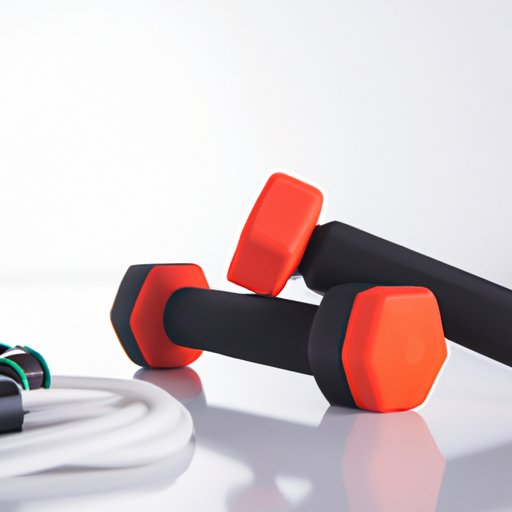
Introduction
When it comes to achieving optimal health, understanding the components of fitness is essential. Being fit doesn’t just mean being strong or having a certain body type. It’s a holistic approach that includes multiple elements of fitness. In this article, we will explore the components of fitness and how to incorporate them into your routine for overall health and wellbeing.
5 Essential Components of Fitness You Need to Know About
The five essential components of fitness are cardiovascular endurance, muscular strength, muscular endurance, flexibility, and body composition. Each of these components plays a crucial role in maintaining overall physical health.
Cardiovascular endurance
Cardiovascular endurance refers to the ability of the cardiovascular system to deliver oxygen to the body’s muscles during physical activity. Improving cardiovascular endurance can reduce the risk of heart disease and other health issues. Some exercises that can improve cardiovascular endurance include running, cycling, and swimming.
Muscular strength
Muscular strength is the ability of your muscles to exert force against resistance. It’s essential for everyday activities like lifting heavy objects and maintaining good posture. Weightlifting and resistance training are effective ways to increase muscular strength.
Muscular endurance
Muscular endurance refers to the ability of your muscles to contract repeatedly without fatigue. Incorporating exercises like push-ups, sit-ups, and planks into your routine can help improve muscular endurance.
Flexibility
Flexibility refers to the range of motion in your joints. Stretching, yoga, and Pilates are effective ways to increase flexibility and reduce the risk of injury during physical activity.
Body composition
Body composition refers to the ratio of fat to muscle in your body. Maintaining a healthy body composition is important for overall health and avoiding health issues like obesity and heart disease. A combination of exercise and healthy eating habits can help maintain optimal body composition.
Exploring the Key Elements of Fitness: What You Need to Prioritize in Your Workouts
The components of fitness that you prioritize in your workouts depend on your personal goals. For example, if you’re training for a marathon, cardiovascular endurance will likely be a top priority. If you’re looking to build muscle, muscular strength and endurance will be essential.
When creating a workout routine, it’s important to include exercises that target each of the five components mentioned above. For cardiovascular endurance, incorporate exercises like running, cycling, and jumping rope. For muscular strength and endurance, weightlifting and resistance training are effective. For flexibility, try yoga poses and stretches. And for body composition, focus on exercises that burn fat and build muscle, alongside a healthy diet.
The Components of Physical Fitness: A Comprehensive Guide to Achieving Optimal Health
The components of fitness don’t just work independently. They have a synergistic relationship and work together for overall health. For example, maintaining a healthy body composition can improve cardiovascular endurance, while improving muscular strength and endurance can also improve flexibility.
When creating a fitness routine, it’s important to maintain balance and incorporate exercises that target each component. A well-rounded fitness routine will support overall health and reduce the risk of injury or health issues.
Breaking Down the Components of Fitness: How Strength, Cardio, and Flexibility Work Together
It’s important to target multiple components of fitness for improved overall health. Incorporating exercises that target strength, cardio, and flexibility can lead to increased energy levels, improved posture, and reduced stress.
Some exercises that simultaneously target multiple components include high-intensity interval training (HIIT), circuit training, and martial arts. These workouts focus on both strength and cardiovascular endurance while incorporating movements that improve flexibility.
From Muscular Strength to Balance: Understanding the Fundamental Components of Fitness
While cardiovascular endurance, muscular strength, muscular endurance, flexibility, and body composition are the essential components of fitness, there are other components that are crucial for overall physical health. Balance and agility, for example, are important for avoiding falls and maintaining mobility as you age.
Incorporating balance exercises into your routine can improve balance and reduce the risk of falls. Some exercises that can improve balance include single-leg stands, yoga poses like Tree Pose, and walking heel to toe.
Conclusion
Understanding the components of fitness is essential for achieving optimal physical health. Cardiovascular endurance, muscular strength, muscular endurance, flexibility, and body composition are all crucial components to prioritize in your routine. Additionally, incorporating balance and agility exercises can support overall health and prevent falls as you age. By maintaining balance and incorporating a variety of exercises for each component, you can achieve a well-rounded fitness routine and support overall health and wellbeing.





